Orangutans are large, red-orange colored primates that are well known for their intelligence. Scientists have identified three different species of orangutans. All three species reside only in the rainforests of Indonesia and Malaysia.
There is the Bornean orangutan, which is native to Borneo; the Sumatran orangutan, which is native to Sumatra; and the Tapanuli orangutan, which is native to South Tapanuli. Read on to learn about the orangutan.
Description of the Orangutan
Orangutans are large apes, with big bodies and very long arms. These lengthy arms are essential for climbing through the rainforest. Large males can have an “armspan” of up to 6.6 ft. across. Males grow much larger than females. They can stand up to 4’6″ tall, while their female counterparts stand about 3’9″ tall. Coarse, reddish hair, covers their entire body, save for their faces, palms, and feet.
Interesting Facts About the Orangutan
These intelligent apes are critically endangered, and really need our help. Learn more about these unique creatures, and why they need protection, below.
- Treetop Living – Of the great apes (orangutans, chimpanzees, and gorillas), orangutans are the only fully arboreal creatures. Arboreal creatures spend most of their time in the trees. Their long, muscular arms and hook-like hands are perfectly adapted for gripping branches.
- Tool Use – Like all great apes, orangutans are highly intelligent. In fact, they are among the most intelligent primates in the world. These mammals use a wide variety of elaborate tools, mainly to retrieve insects and seeds from hard-to-reach places. They learn tool use from one another, and some scientists even believe they have a level of cultural impact on one another.
- Sexually Dimorphic – It is quite easy to tell the difference between a male and a female orangutan. Besides being noticeably larger, male orangutans have large, flattened cheek pads on either side of their faces. However, only adult males have cheek pads, and younger males look similar to females.
- Calculated Reciprocity – These highly intelligent creatures are more than capable of advanced thought and reasoning. Studies of orangutans in zoos have given us unrivaled information about what these creatures can learn.One study determined that orangutans can understand and use “calculated reciprocity.” This basically means that the orangutans can understand what something is “worth” and will know if proposed trade is sufficiently valuable. For example, if they can trade a tool for five pieces of fruit, they will feel cheated when they trade it and receive a single piece of fruit.
Habitat of the Orangutan
These great apes have relatively particular habitat needs. They live in rainforests across the islands of Indonesia and Malaysia. Their favorite types of forests are peat swamp and dipterocarp forests. Not only will orangutans live in mountainous regions, but they also occupy lowland swamps. While searching for food they will also range into grasslands, agricultural areas, and even gardens.
Distribution of the Orangutan
Each species of orangutan has a slightly different range, and all are Critically Endangered and extremely rare within their range. Year after year, the amount of usable habitat shrinks, and the range of these creatures decreases.
The Bornean species exists on the island of Borneo, primarily on the eastern and southern coasts. The Sumatran subspecies exists in, you guessed it, Sumatra! Unfortunately, habitat destruction has restricted them to the northwestern tip of the island. Finally, the Tapanuli species ranges only in South Tapanuli in Sumatra.
Diet of the Orangutan
The favorite foods of the orangutan vary from season to season, primarily based on food availability. Fruit makes up a huge portion of their diet, anywhere from 65 – 90 % or more. They prefer fruits that are high in sugar or fat, and ficus are a particular favorite.
The number of fruiting trees is what restricts an orangutan to a few small habitats. When they aren’t munching on a wide variety of fruit, they can enjoy eating eggs, tree bark, honey, leaves, and sometimes small mammals.
Palm Oil and the Decimation of Orangutan Populations
As with the vast majority of rainforest species, habitat destruction is decimating orangutan populations. One of the primary reasons for deforestation across their range is for the planting of palm oil.
Humans cut down the rainforest to plant palms, and we use the oil from these palms in many different products. Many products containing palm oil are contributing to the decline of orangutans, as the vast majority of palm oil exists unsustainably. Learn more about which products are an eco-friendly by visiting the World Wildlife Foundation.
Orangutan and Human Interaction
Habitat destruction for palm oil plantations is not the only danger facing these great apes. Hunting is a serious danger to the survival of all three species of orangutans. Native people will kill orangutans and other rainforest creatures as bushmeat, despite protections set to save the populations. They will also kill the apes in retaliation to protect their crops.
The pet trade is also a major problem. Not only are infants taken for sale as pets, but this necessitates the killing of their mothers, to enable humans to capture the babies more easily. Because of all these activities, all three species, the Sumatran, the Bornean, and the Tapanuli, are Critically Endangered.
Domestication
Humans have not domesticated orangutans in any way.
Does the Orangutan Make a Good Pet
No, orangutans do not make good pets. They are Critically Endangered, and every animal is important for the survival of the species. Because of this, it is highly illegal to own an orangutan as a pet.
Orangutan Care
In zoos, orangutans live in large enclosures with plenty of opportunities for climbing. These climbing opportunities include natural branches and trees as well as ropes and other manmade structures. Because these creatures are much less social than the other great apes, zoo staff usually house them alone, in pairs, or with their offspring.
It goes without saying that these mammals are highly intelligent. Because of this level of intelligence, it is extremely important to provide a varied enrichment schedule to keep them mentally stimulated. Zookeepers give orangutans a number of different toys, puzzle feeders, foraging opportunities, and more. Some orangutans even play video games on touch screen computers.
Training using positive reinforcement is also extremely useful in keeping the apes stimulated, maintaining their health, and helping to continue research about orangutans.
Behavior of the Orangutan
In the wild, these primates are the least social of the great apes. Mothers and their offspring have the strongest social bonds. Once the young orangutans reach sexual maturity, they will eventually leave their mothers and seek territories of their own.
However, many young orangutans will remain with their mothers for some time before striking out on their own. Many female orangutans remain close to their mothers, and even establish neighboring territories that overlap, though they rarely interact.
Reproduction of the Orangutan
Only dominant males with territories mate with the females, though the sub-males can occasionally reproduce as well. The females will choose dominant males and remain with them to deter the sub-males. After mating, the female orangutan gives birth to a single infant.
The gestation period is nine months long, and the female will not reproduce again until around eight years later. The female orangutan is the sole teacher and provider to the infant, and she will carry the baby until it is about two years old and can climb more successfully on its own. The young orangutans will become more independent between two and four years of age.



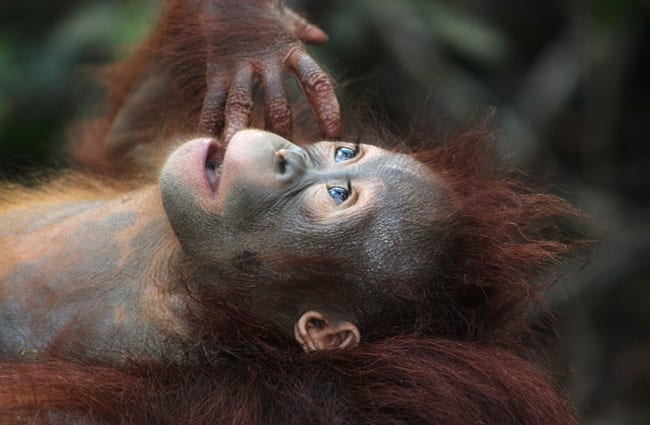
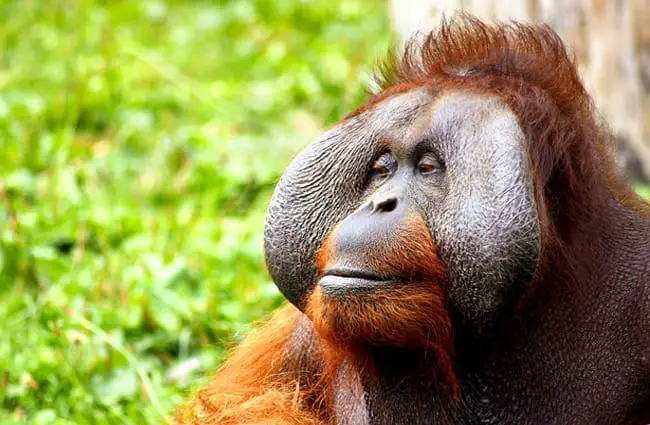
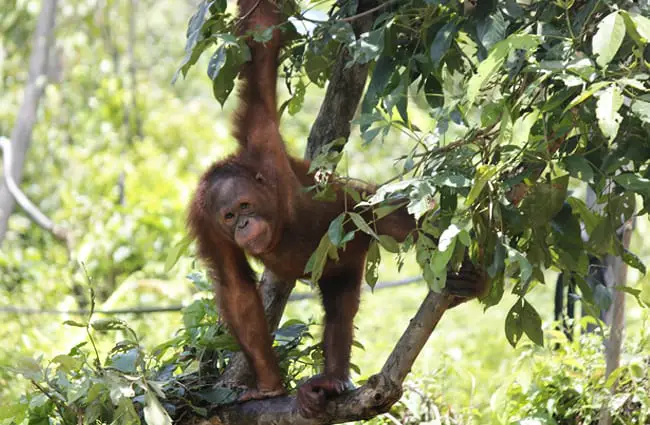
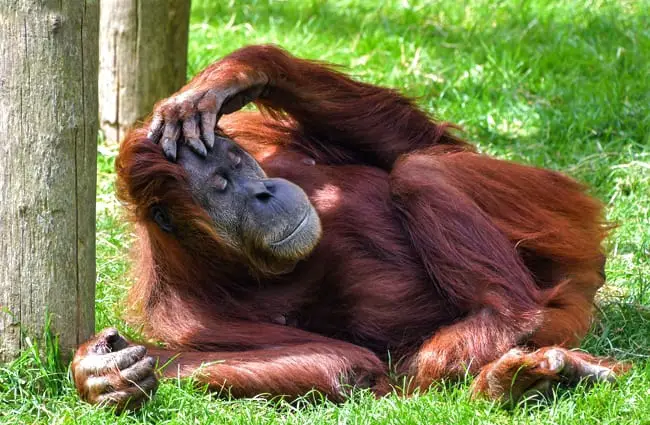





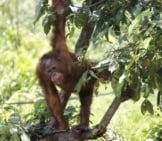

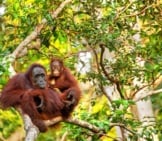
![Red Angus Closeup of a beautiful Red Angus cowPhoto by: U.S. Department of Agriculture [pubic domain]https://creativecommons.org/licenses/by/2.0/](https://animals.net/wp-content/uploads/2020/03/Red-Angus-4-238x178.jpg)












![Red Angus Closeup of a beautiful Red Angus cowPhoto by: U.S. Department of Agriculture [pubic domain]https://creativecommons.org/licenses/by/2.0/](https://animals.net/wp-content/uploads/2020/03/Red-Angus-4-100x75.jpg)

